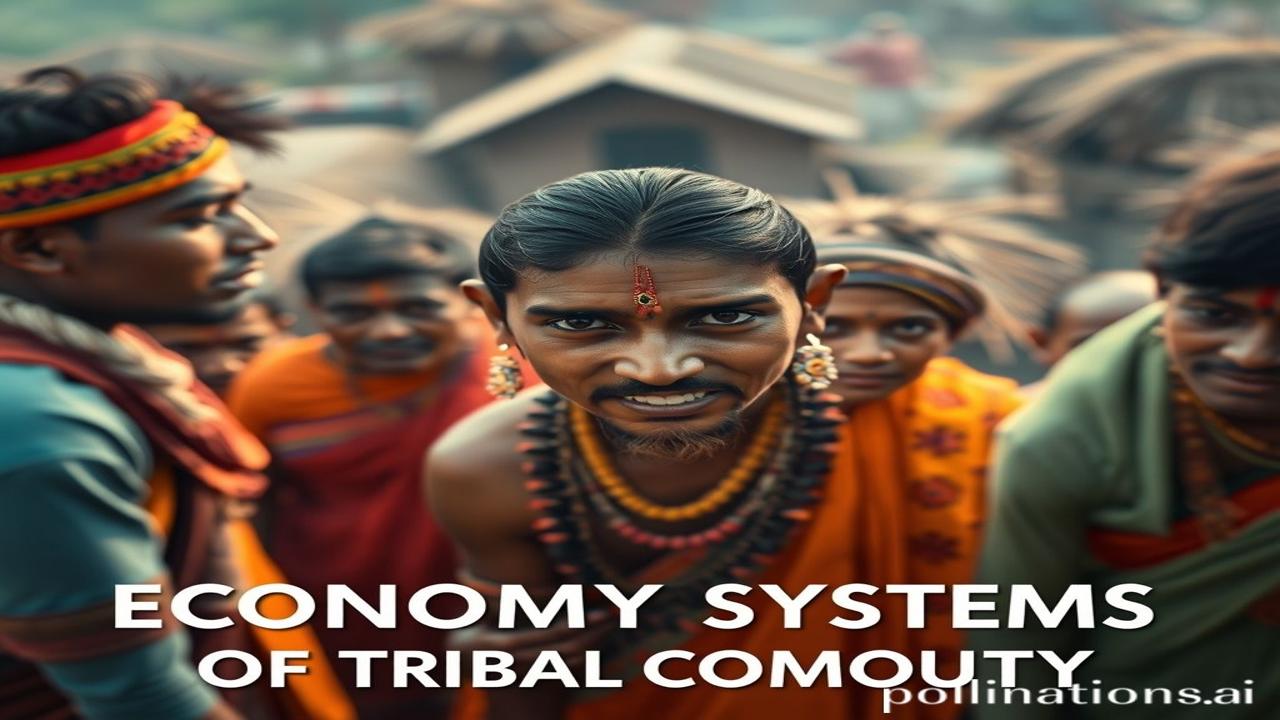Okay, here’s a blog article on the economic systems of tribal communities, aiming for that immersive, Hinglish, and human-centered approach.
Waqt Ki Dhool Mein Dabi, Bharat Ki Aatma: Tribal Economies – A Journey Back
Kabhi socha hai, jab sheharon ki bheed aur markets ki chamakdhamak nahi thi, tab India kaise guzara karta tha? Imagine yourself walking through dense forests, the scent of wet earth and unknown flowers filling your lungs. You hear the distant rhythm of drums, a language older than concrete and steel. This is the world of tribal economies, a world often unseen, unheard, but absolutely vital to understanding the true soul of India. Waqt ki dhool mein dabi hui, yeh kahaniyan humein yaad dilati hain ki ‘development’ ka matlab sirf skyscrapers nahi hota.
Economic Systems of Tribal Communities: A Historical Deep Dive
So, what exactly are we talking about? Tribal economies, or Adivasi arthavyavastha, refer to the diverse economic systems that existed and often continue to exist within India’s tribal communities. These aren’t monolithic; they vary wildly based on geography, resources, and cultural practices.
Historically, from ancient times through the medieval period and even persisting to a degree today, these economies were largely self-sufficient and based on:
- Subsistence Agriculture: Growing food primarily for their own consumption. Think rice, millets, pulses cultivated using traditional methods.
- Hunting and Gathering: Relying on the forests for food, medicine, and other necessities.
- Barter System: Exchanging goods and services with other tribes or settled communities. Paisa rarely played a central role. Dhan (wealth) existed in terms of cattle, grains, and land.
- Forest Produce: Collecting and selling things like honey, herbs, bamboo, and lac.
- Handicrafts: Creating beautiful and functional items like baskets, pottery, textiles, and metalwork.
These systems weren’t just about survival; they were deeply intertwined with their social structures, religious beliefs, and relationship with प्रकृति (Prakriti – Nature). The land was considered sacred, a mother, not just a commodity.
The importance lies in the fact that these economies represented a harmonious way of living with the environment, a concept that’s becoming increasingly crucial in our modern, consumption-driven world. Their indigenous knowledge about sustainable resource management is invaluable.
Zameeni Sach: A Day in the Life of a Gond Farmer
Imagine a Gond tribe village in Chhattisgarh. The morning sun casts long shadows across the fields of paddy. A middle aged woman, Mai Sukhia, with her traditional tattoos and vibrant cotton saree, heads to her field. She sings a folk song, karma geet, as she walks. Her husband, Dukhu, follows, carrying an hal (plough). They work the land together, using techniques passed down through generations.
“Arre Dukhu, aaj barish ka mausam lag raha hai kya?” asks Mai Sukhia, wiping sweat from her brow.
“Haan Sukhia, Badal toh jam rahe hain. Indra dev ki kripa ho toh fasal achi hogi,” Dukhu replies, his eyes scanning the sky.
They aren’t just farmers; they are guardians of the land. After the harvest, a portion is set aside for the village deity. Before felling a tree, they perform a ritual to appease the spirits. Their life isn’t easy, but it’s filled with a profound connection to the earth and a sense of community. They are not just surviving; they are living a life rich in tradition and meaning. Their fears are about monsoon, pests, and exploitation by outsiders, but their joys are in the harvest, the festivals, and the bonds of kinship.
Dharohar Aur Pehchaan: Echoes of the Past in Modern India
Aaj bhi (even today), we see glimpses of these economic systems. In many tribal areas, especially in the Northeast and Central India, traditional agricultural practices continue. Handicrafts remain a vital source of income and cultural expression. The concept of community ownership and resource management, rooted in tribal traditions, is finding renewed relevance in discussions about sustainable development.
Many modern NGOs and grassroots organizations are working to empower tribal communities by promoting their traditional skills and helping them access fair markets for their products. We can see the impact of this in the popularity of tribal art forms like Warli painting, Gond art, and Dokra metal casting. They are not just crafts; they are windows into a rich cultural heritage, a dharohar that needs to be preserved. Yeh Bharatiyata ka ek important hissa hai, jo humein yaad dilata hai ki Bharat sirf sheharon ka desh nahi hai.
Mazedar Tathya Ya Bhram-Bhanjak: Myths Busted!
Log samajhte hain ki tribal economies backward hoti hain. Lekin asli sach yeh hai ki they are incredibly resilient and sustainable. Their low carbon footprint and emphasis on resource conservation offer valuable lessons for the world grappling with climate change. They have a deep understanding of ecological balance, something that modern economics often overlooks.
Another common misconception is that all tribal communities are the same. Nothing could be further from the truth! Each tribe has its own unique customs, languages, and economic practices, reflecting the diverse tapestry of India.
Drishya Aur Bhavnayein: A Sensory Journey
Imagine the smell of burning firewood mingling with the sweet scent of mahua flowers being distilled. The sounds of children laughing as they play by a stream. The feel of roughspun cotton on your skin. The vibrant colors of tribal dances during a festival. The taste of freshly roasted kodo millet. Yeh sab India ki asliyat hai, the sights, sounds, smells, tastes, and textures of a world that often remains hidden from our urban eyes.
Antim Vichar Ya Uddharan: A Closing Reflection
The economic systems of tribal communities offer more than just a glimpse into the past; they offer a vision for the future. A future where development isn’t just about economic growth but about ecological sustainability, social justice, and cultural preservation.
“Vasudhaiva Kutumbakam” – The world is one family. This ancient Indian philosophy finds its truest expression in the communal spirit and interconnectedness that defines tribal economies. Let us learn from their wisdom and strive to create a more equitable and sustainable world for all.
